
Amazon People

Rain forest cover less than six percent of the Earth's total land
surface, but they are the home for up to three-fourths of all known species of
plants and animals; they also contain more species as yet undiscovered. Recent
studies suggest that this great diversity of species is related to the
apparently dynamic and unstable nature of rain forests over geologic time.
Despite their appearance of fertile abundance, rain forests are fragile
ecosystems. Their soils can quickly lose the ability to support most forms of
vegetation once the forest cover is removed, and some soils even turn into hard
LATERITE clay. The effect of forest removal on local climates is also often
profound, altrough the role of rain forests in world climatic changes is not yet
clear.
Despite the enormity of the Amazon Basin, the natural balance of
aquatic systems in the area is increasingly more threatened. Deforestation by
colonists and corporations has contributed to serious erosion problems in the
region. Increased use of pesticides has threatened more and more animals
dependant on the aquatic environment in recent years. Increasing humam
population pressure has led to overfishing an depletion of once abundant fish an
mammal species.
The Brazilian pirarucu is an example of a native fish
species that is currently approaching extinction due to the above-mentioned
factors. This species is among the world's largest freshwater fish, and is found
many in many eastern Amazonian waterways. Because it is an air-breather, and
must surface frequently, it bas become easy prey for Brazilian
cabocloFisherman.
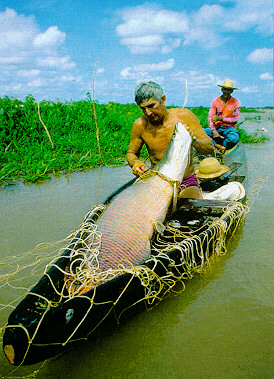
The Manatee is another species that has been hunted ruthlessly by locals
and commercial fisherman. It has become one of the most threatened species in
the 4.7 million square mile Amazon Basin. The Amazon manatee, the smallest of
the world's manatees, is about 10 feet long and weights more than 1000 pounds.
It has been hunted since the 1700s. Its hide and blubber are used for industrial
purposes, while its meat is considered a delicacy. Though these mammals have
been officially protected since 1967. However, this hasn't stopped local people
from ruthlessly hunting them.
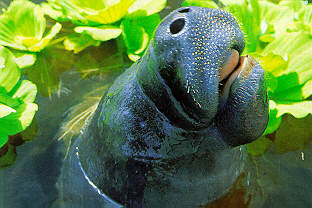

For centuries, people made little impact on the Amazon and its drainage
basin. In recent decades, however, the combined activities of loggers, farmers,
ranchers, miners, and road builders have destroyed more than 518,000 sq km of
forestland, and the rate of forest depletion has been estimated at 26,000 sq km
annually. Never-the-less, much of the region remains a wildness.


Throughout history, humans have encroached on rain forests for living
space, timber, and agricultural purposes. In vast portions of upland tropical
forests, the practice of "shifting cultivation" has caused deterioation of the
primary forest. In this system of agriculture, trees are killed in small plots
that are cropped for two of three seasons and then abandoned; if the plots are
recultivated before primary vegetation has reestablished itself, a progressive
deterioration of the forest results.
The economy continues to be dominated by
primitive agriculture, hunting and fishing, and the gathering of various forest
products.
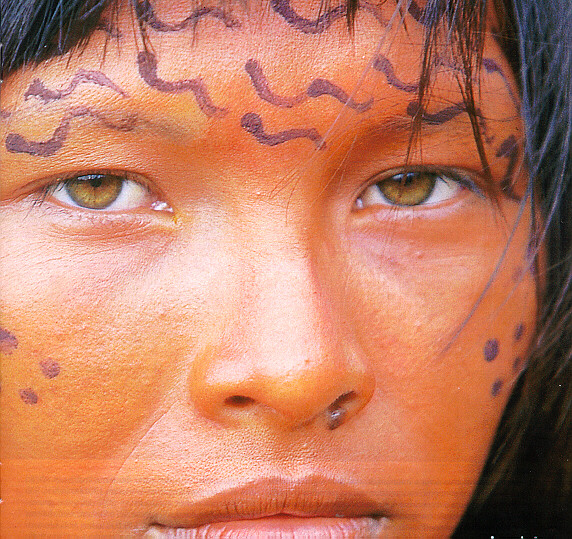 Jovem India (Indian Girl) |
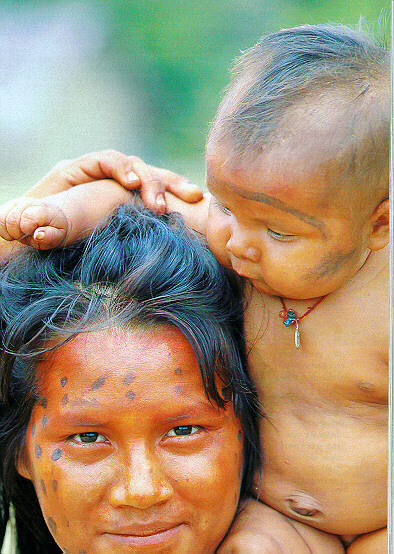 India e filho (Indian Mother) |
 Velho Indio (Old Indian) |
 Indio com cocar (Indian) |
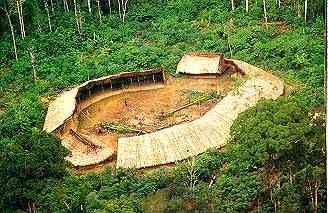
Aldeia India (Indian Village)
![]()
Raintree Nutrition, Inc. (Amazon
Gallery)
Funís Physics / Safeguards / Grandson